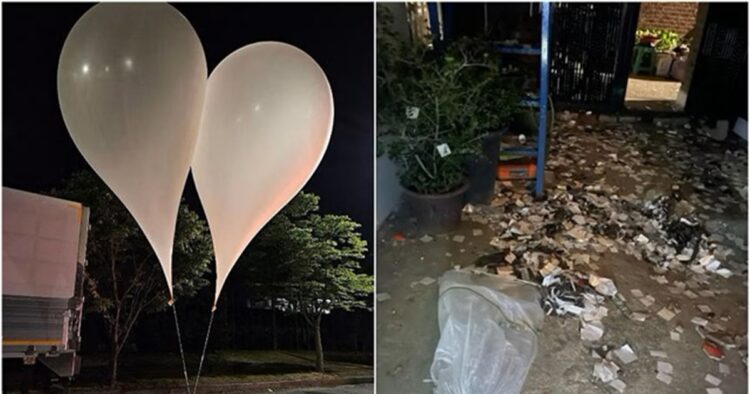On Sunday, South Korea reported that North Korea sent balloons filled with trash into its territory overnight. According to South Korea’s Joint Chiefs of Staff, around 600 balloons carrying various waste items were discovered across the capital city between 8 pm and 10 am local time.
Contents of the Balloons
The balloons were found to contain items such as cigarette butts, fabric, paper waste, and plastic. The trash was suspended in large bags beneath the balloons, making them easily identifiable from the ground and air. This action is believed to be a form of retaliation from North Korea.
The South Korean military confirmed that they are closely monitoring the situation. They are conducting aerial surveillance to track the source of these balloons and to retrieve them from their locations. This step is part of their ongoing efforts to manage and control the fallout from such provocative actions by North Korea.
Previous Incidents and Reactions
This incident follows a similar event on Wednesday when North Korea launched hundreds of balloons filled with trash and excrement across the heavily fortified border. North Korea branded these balloons as “gifts of sincerity.” South Korea condemned this move, calling it both provocative and hazardous to public health.
Responding to these actions, emergency alerts were issued in the North Gyeongsang and Gangwon provinces, as well as certain areas of Seoul. The alerts warned residents against coming into contact with the balloons and urged them to notify authorities if they encountered any.
National Security Council Meeting
The National Security Council’s standing committee in South Korea is scheduled to meet on Sunday afternoon. They will discuss whether to resume broadcasting loudspeaker messages directed at North Korea in response to this balloon incident.
South Korea had stopped these broadcasts in 2018 following a rare summit with North Korean leader Kim Jong Un, but the recent provocations have brought this measure back into consideration.
Context of the Incident
The balloon incidents are seen as a response to South Korean activists flying anti-North Korean leaflets across the border. These leaflets often criticize the North Korean regime and call for change, which has been a point of contention between the two countries. The trash-filled balloons are Pyongyang’s way of retaliating against these activist campaigns.
The recent actions by North Korea have heightened tensions between the two countries. South Korea is taking measures to address the immediate issue and to prevent future incidents.
The outcome of the National Security Council meeting will likely influence the next steps in South Korea’s response to these provocations.

















Comments